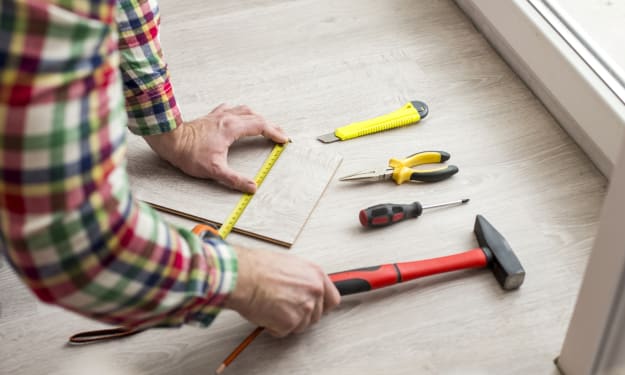How to plan a woodworking project?
What woodworking project is most profitable?

## How to Plan a Woodworking Project
Woodworking is a rewarding hobby that combines creativity, precision, and craftsmanship. Whether you're building a simple shelf or an intricate piece of furniture, careful planning is essential for a successful project. Here’s a step-by-step guide to help you plan your next woodworking project.
### 1. **Choose Your Project**
Before you start, decide what you want to build. Consider your skill level, available tools, and the amount of time you can dedicate to the project. Beginners might start with smaller projects like picture frames or birdhouses, while more experienced woodworkers could take on furniture or cabinetry.
### 2. **Sketch Your Design**
Once you’ve chosen a project, sketch your design. This doesn't need to be a work of art; a simple, clear drawing will suffice. Include all the dimensions and key features. If you're not confident in your drawing skills, there are many online resources and software tools that can help you create detailed plans.
### 3. **Select Your Materials**
Choosing the right wood is crucial. Different types of wood have different properties and are suited to different types of projects. For instance, pine is soft and easy to work with, making it great for beginners, while oak is hard and durable, ideal for furniture. Calculate how much wood you’ll need based on your design and make a list.
### 4. **Gather Your Tools**
Ensure you have all the necessary tools before you start. Basic woodworking tools include:
- Measuring tape
- Square
- Handsaw or circular saw
- Chisels
- Hammer
- Drill
- Clamps
- Sandpaper
- Safety gear (goggles, ear protection, and a dust mask)
If your project requires more specialized tools (like a router or jigsaw), make sure you have access to them.
### 5. **Plan Your Cuts**
Careful planning of your cuts will minimize waste and ensure accuracy. Measure twice and cut once is a good rule to follow. Lay out your cut lines on the wood before you start cutting, and double-check your measurements.
### 6. **Safety First**
Safety should always be your top priority. Wear appropriate safety gear and make sure your workspace is well-ventilated and well-lit. Keep your tools in good condition and be mindful of your hands and fingers when using cutting tools.
### 7. **Build a Prototype (Optional)**
For complex projects, building a prototype can help you work out any kinks in your design before committing to your final materials. Use cheaper wood or scrap pieces for this step.
### 8. **Start Building**
With your design, materials, and tools ready, you can start building. Follow your plan carefully, and take your time to ensure precision. Remember, it’s better to go slow and get it right than to rush and make mistakes.
### 9. **Finishing Touches**
Once your project is assembled, take the time to sand it down, fill any gaps or holes, and apply your chosen finish. Whether it’s paint, stain, or varnish, a good finish will enhance the appearance and durability of your project.
### 10. **Review and Reflect**
After completing your project, take a moment to review your work. Reflect on what went well and what could be improved. This will help you continue to develop your skills and tackle even more ambitious projects in the future.
### Conclusion
Planning a woodworking project might seem daunting, but breaking it down into manageable steps can make the process smoother and more enjoyable. With careful planning, attention to detail, and a commitment to safety, you’ll be able to create beautiful, functional pieces that you can be proud of. Happy woodworking!
## Is There a Future in Woodworking?
Woodworking, an age-old craft that has shaped civilizations and homes for centuries, is experiencing a renaissance. As we move further into the 21st century, many wonder: is there a future in woodworking? The answer is a resounding yes. Here’s why woodworking continues to thrive and what the future holds for this timeless art.
### 1. **Sustainable Practices and Eco-Friendly Materials**
One of the biggest trends shaping the future of woodworking is the emphasis on sustainability. As consumers become more environmentally conscious, the demand for eco-friendly and sustainably sourced wood products is on the rise. Woodworkers are increasingly adopting practices such as using reclaimed wood, utilizing non-toxic finishes, and ensuring their materials come from responsibly managed forests. This shift not only helps the environment but also appeals to a growing market of eco-conscious consumers.
### 2. **Technological Advancements**
Technology is revolutionizing woodworking in ways that were unimaginable a few decades ago. Computer Numerical Control (CNC) machines, laser cutters, and 3D printing are making it possible to create intricate designs with precision and efficiency. These advancements allow woodworkers to push the boundaries of their creativity and take on complex projects that would have been difficult or impossible by hand. Additionally, software tools for design and planning streamline the process, making woodworking more accessible to beginners and hobbyists.
### 3. **Rise of the Maker Movement**
The maker movement, characterized by a do-it-yourself ethos and a love for crafting and building, has brought renewed interest to woodworking. Makerspaces and community workshops are popping up in cities around the world, providing access to tools and resources for those interested in woodworking. This communal approach fosters learning, collaboration, and innovation, creating a vibrant and supportive woodworking community.
### 4. **Customization and Personalization**
In a world dominated by mass-produced goods, there is a growing appreciation for bespoke, handcrafted items. Woodworking caters to this desire for uniqueness and personalization. Whether it’s custom furniture, tailored cabinetry, or personalized gifts, consumers are willing to pay a premium for items that reflect their individual tastes and needs. This trend towards customization is driving demand for skilled woodworkers who can deliver one-of-a-kind pieces.
### 5. **Educational Opportunities**
The future of woodworking is also bright due to the increasing availability of educational resources. Online platforms offer tutorials, courses, and forums where woodworkers of all levels can learn and share knowledge. Traditional woodworking schools and apprenticeships continue to thrive, providing hands-on training and mentorship. This wealth of educational opportunities ensures that the craft of woodworking will continue to be passed down to future generations.
### 6. **Health and Wellbeing Benefits**
Woodworking is more than just a craft; it’s a therapeutic activity that offers numerous health benefits. Engaging in woodworking can reduce stress, improve mental clarity, and provide a sense of accomplishment. As more people seek hobbies that promote wellbeing and mindfulness, woodworking stands out as an excellent choice. This trend is likely to grow, further cementing woodworking’s place in the future.
### 7. **Cultural and Artistic Value**
Woodworking holds significant cultural and artistic value. It’s a means of preserving traditional techniques and heritage while also allowing for contemporary artistic expression. The fusion of traditional craftsmanship with modern design continues to produce stunning works of art that captivate audiences and collectors alike. As long as there is an appreciation for the beauty and artistry of wood, woodworking will continue to flourish. Ted's Woodworking Reviews
### Conclusion
The future of woodworking is bright and full of potential. With a focus on sustainability, the integration of advanced technology, the rise of the maker movement, and a growing demand for custom, personalized items, woodworking is poised to thrive in the coming years. Educational resources and the health benefits associated with the craft further ensure its ongoing relevance and appeal. As we look ahead, it’s clear that woodworking will remain a cherished and vital part of our cultural and creative landscape. So, whether you're a seasoned woodworker or just starting out, there has never been a better time to embrace this timeless craft.
About the Creator
peter
Content about cars, motorbikes, technology, news
Enjoyed the story? Support the Creator.
Subscribe for free to receive all their stories in your feed. You could also pledge your support or give them a one-off tip, letting them know you appreciate their work.






Comments
There are no comments for this story
Be the first to respond and start the conversation.